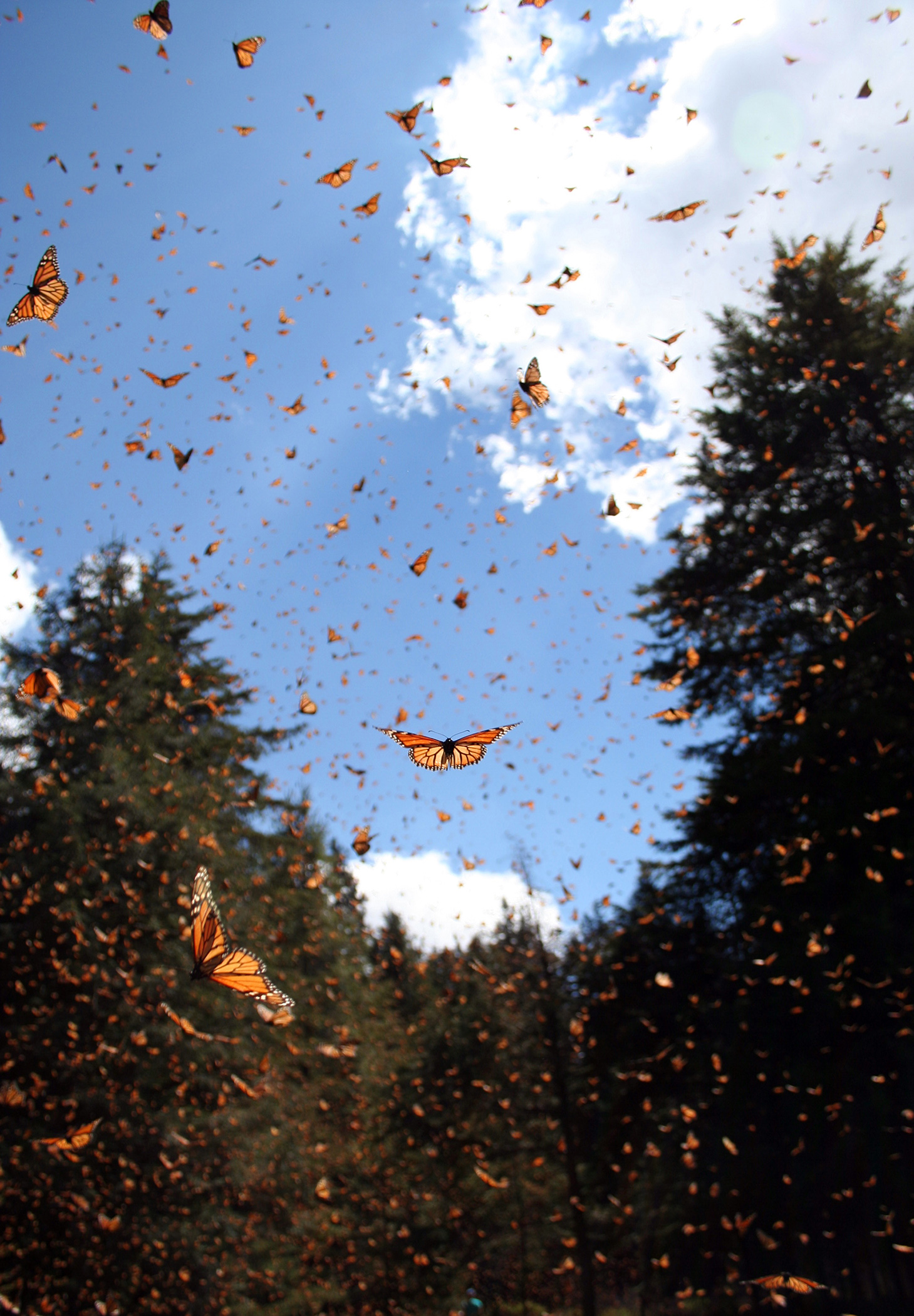Athens, Ga. – A report on monarch butterflies by the World Wildlife Fund reveals that the area occupied by migratory monarchs wintering in Mexico in 2014 was 69 percent greater than last winter’s historic low—but is still the second-smallest area occupied since record-keeping began in 1993, pointing to the need for continued conservation efforts.
The University of Georgia has several monarch butterfly experts available to speak to the issue. Quotes from two of the experts are available below.
The report is available at www.worldwildlife.org/publications/forest-surface-area-occupied-by-monarch-butterfly-hibernation-colonies-in-december-2014.
Sonia Altizer
Altizer is the UGA Athletic Association Professor of Ecology and associate dean for academic affairs in the Odum School of Ecology. Her most recent publications include a study of the genetics and evolutionary history behind monarch migration and a paper with Dara Satterfield about how planting tropical, rather than native, milkweed affects migration and disease.
Expertise: Monarch butterfly migration, threats and conservation; ecology of infectious disease in natural populations; long-distance animal migration and human-caused changes that influence infectious disease dynamics
Contact: 706-542-9251, saltizer@uga.edu
“Monarchs in the past have repeatedly bounced back from years of low abundance,” Altizer said. “The problem is that if you look at the numbers over time, the height of their ‘bounce’ is getting smaller and smaller. So while it seems encouraging that numbers this year are higher than last winter, the big question is whether they can come back anywhere close to their long-term average. Otherwise, the population will stay on its downward trajectory, and this is just the lowest ‘bounce’ yet.”
Dara Satterfield
Satterfield is a doctoral candidate in the Odum School. She recently published a paper with Altizer exploring the impact of tropical milkweed-planted by gardeners in an effort to counter the decline of native milkweeds-on monarch migration and disease.
Expertise: Monarch butterfly migration, infectious disease, tropical milkweed and conservation
Contact: 706-542-3485, dara7@uga.edu
“I find both despair and hope in this year’s 69 percent increase in monarchs,” Satterfield said, “despair because we’re still toeing the line on ending one of the world’s greatest migrations and hope because we’re moving in the right direction.”
Andy Davis
Davis is an assistant research scientist in the Odum School. His most recent publications cover the impacts of diet on monarch wing color and size, which has implications for migratory success, and the relationship between wing color and fat reserves.
Expertise: Monarch butterfly physiology, migration and population trends
Contact: 706-542-8112, akdavis@uga.edu


